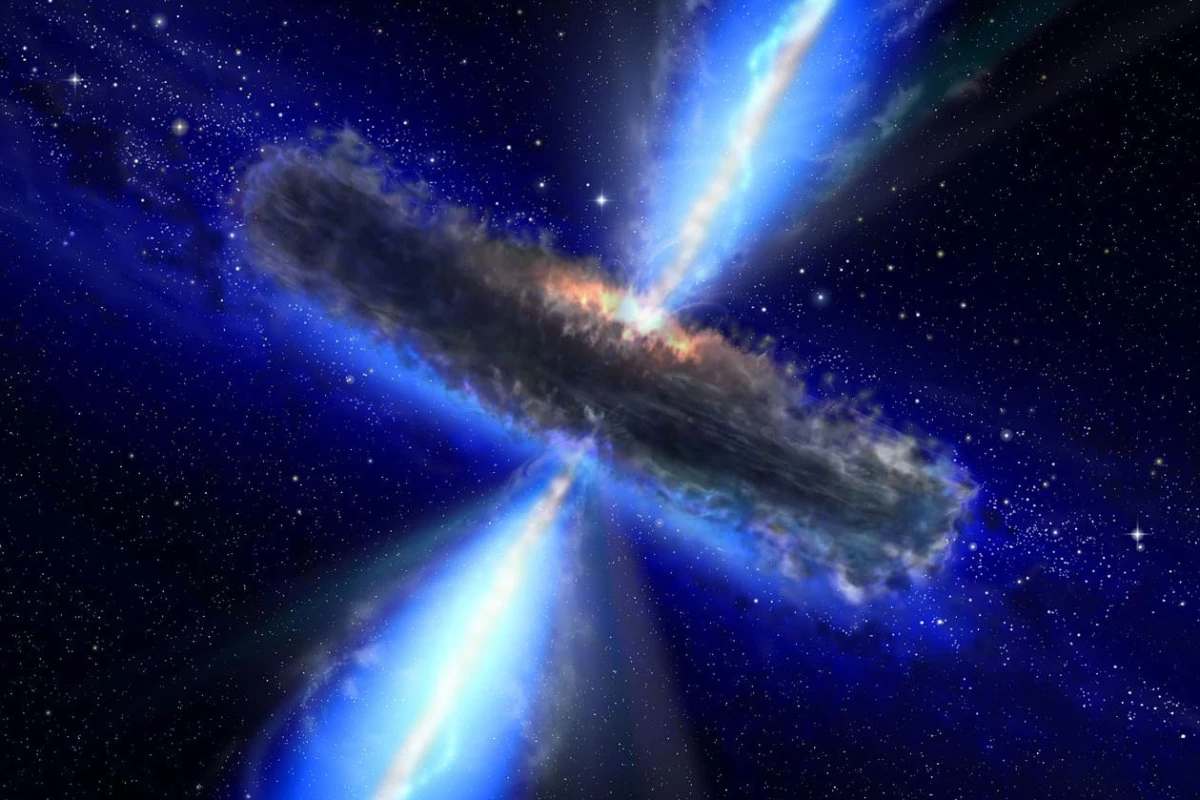Two international teams of astronomers have discovered the largest and farthest reservoir of water ever detected in the universe. The researchers found the huge mass of water feeding a black hole, called a quasar, more than 12 billion light-years away. The mass of water vapor is at least 140 trillion times that of all the water in the world's oceans combined and 100,000 times more massive than the sun.
Quasars are among the most luminous, powerful, and energetic objects known in the universe. They are powered by an enormous black hole that steadily consumes a surrounding disk of gas and dust, spewing out huge amounts of energy as it eats. The particular quasar under investigation, which bears the catchy name of APM 08279+5255, harbors a black hole 20 billion times more massive than the sun and produces as much energy as a thousand trillion suns.
Although astronomers had expected water vapor to be present even in the early, distant universe, they had not detected it this far away before. They point out that there is water vapor in the Milky Way, but because most of the Milky Way's water is frozen in ice, the total amount of water vapor is 4,000 times less than in the quasar.
The astronomers say that water vapor is an important trace gas that reveals the nature of a quasar. In this case, the water vapor is distributed around the black hole in a gaseous region spanning hundreds of light-years in size. Its presence indicates that the quasar is bathing the gas in X-rays and infrared radiation, and that the gas is unusually warm and dense by astronomical standards. Although the gas is at a chilly minus 63 degrees Fahrenheit (minus 53 degrees Celsius) and is 300 trillion times less dense than Earth's atmosphere, it's still five times hotter and 10 to 100 times denser than what's typical in galaxies like the Milky Way.
Measurements of the water vapor and of other molecules, such as carbon monoxide, suggest there is enough gas to feed the black hole until it grows to about six times its size. However, it's unclear whether this will happen or not as some of the gas may end up condensing into stars or might be ejected from the quasar.
The discovery was made by two international teams of astronomers, each led by scientists at the California Institute of Technology (Caltech), that have each described their quasar findings in separate papers that have been accepted for publication in the Astrophysical Journal Letters.
"It's another demonstration that water is pervasive throughout the universe, even at the very earliest times," said Matt Bradford, a scientist at NASA's Jet Propulsion Laboratory (JPL), and a visiting associate at Caltech, who led one of the teams.
Bradford's team started making their observations in 2008 using an instrument called "Z-Spec" at Caltech's Submillimeter Observatory, a 33-foot (10-meter) telescope near the summit of Mauna Kea in Hawaii. Follow-up observations were made with the Combined Array for Research in Millimeter-Wave Astronomy (CARMA), an array of radio dishes in the Inyo Mountains of Southern California.
The second team was led by Dariusz Lis, senior research associate in physics at Caltech and deputy director of the Caltech Submillimeter Observatory. This group used the Plateau de Bure Interferometer in the French Alps to find water.
In 2010, Lis's team serendipitously detected water in APM 8279+5255, observing one spectral signature. Bradford's team was able to get more information about the water, including its enormous mass, because they detected several spectral signatures of the water.
Source: NASA




